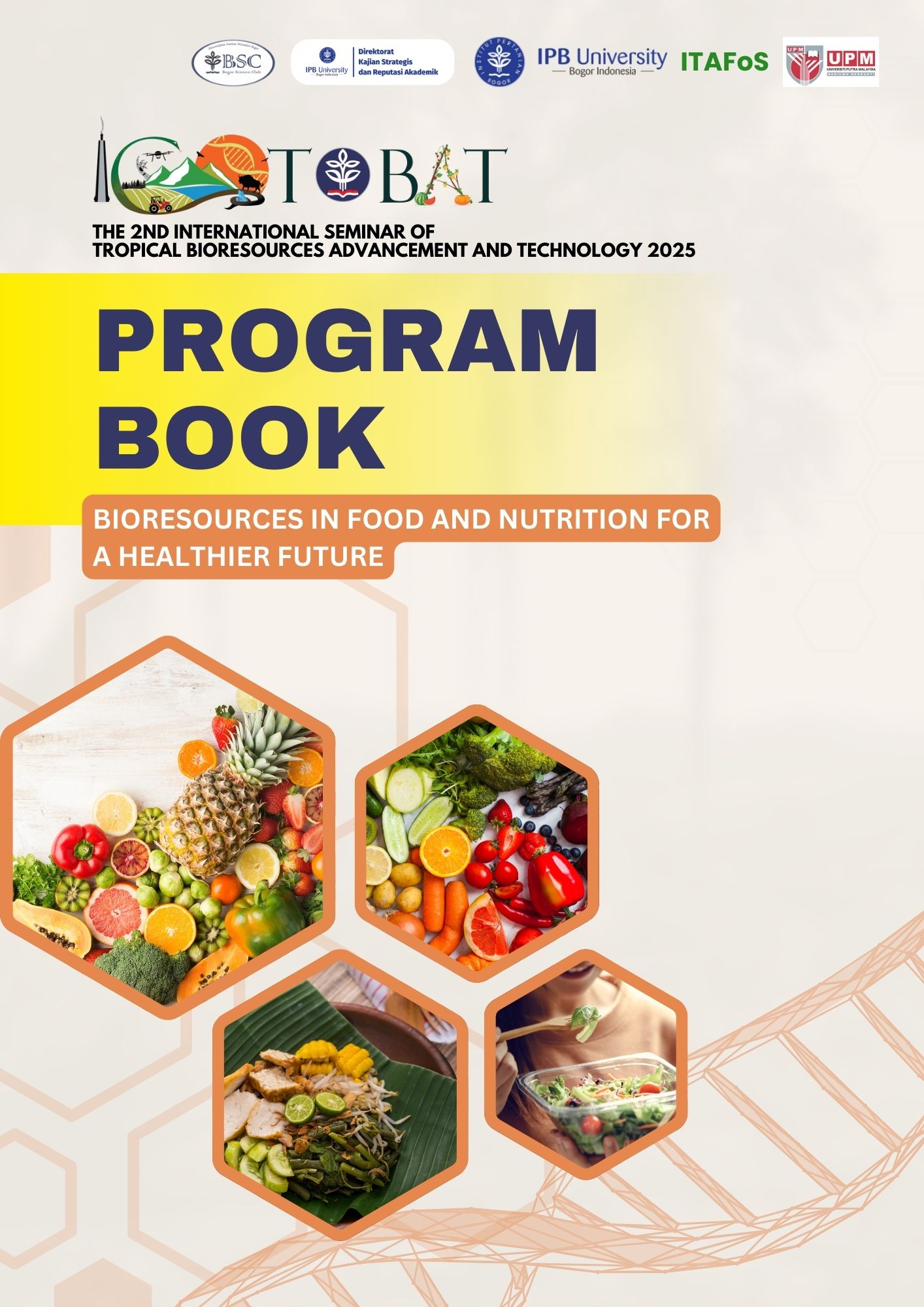Effect of Variation in Okara Flour and Soybean Flour Composition on the Characteristics of Snack Bars
Will be presented at Friday, 23 May 2025, 10.10 (GMT +7)
Keywords:
Okara flour, soybean flour, snack bar, physicochemical characteristics, organolepticAbstract
This study aimed to analyze the effect of varying compositions of okara flour (tofu residue) and soybean flour on the physicochemical and organoleptic characteristics of snack bars. The utilization of okara as a substitute material was driven by its potential to reduce waste from tofu processing industries while enhancing the product's nutritional value through its fiber and protein content. The combination with soybean flour was expected to balance the nutritional profile and improve the product's functional properties. The experimental design used was a Completely Randomized Design (CRD) with five treatment levels and three replications. The treatment levels comprised the following ratios of okara flour to soybean flour: 15%:85%, 25%:75%, 35%:65%, 45%:55%, and 55%:45%. The analyzed parameters included chemical analysis (moisture, fat, protein, and fiber content), physical analysis (color), and organoleptic tests (hedonic quality and multiple comparison tests). The results showed that the ratio of okara flour to soybean flour had a highly significant effect on moisture content and overall preference, a significant effect on color, aroma, and specific preference attributes, but no significant effect on organoleptic color, aftertaste, adhesiveness, chewiness, or overall multiple comparison scores. The 15%:85% ratio produced snack bars with the best characteristics






























